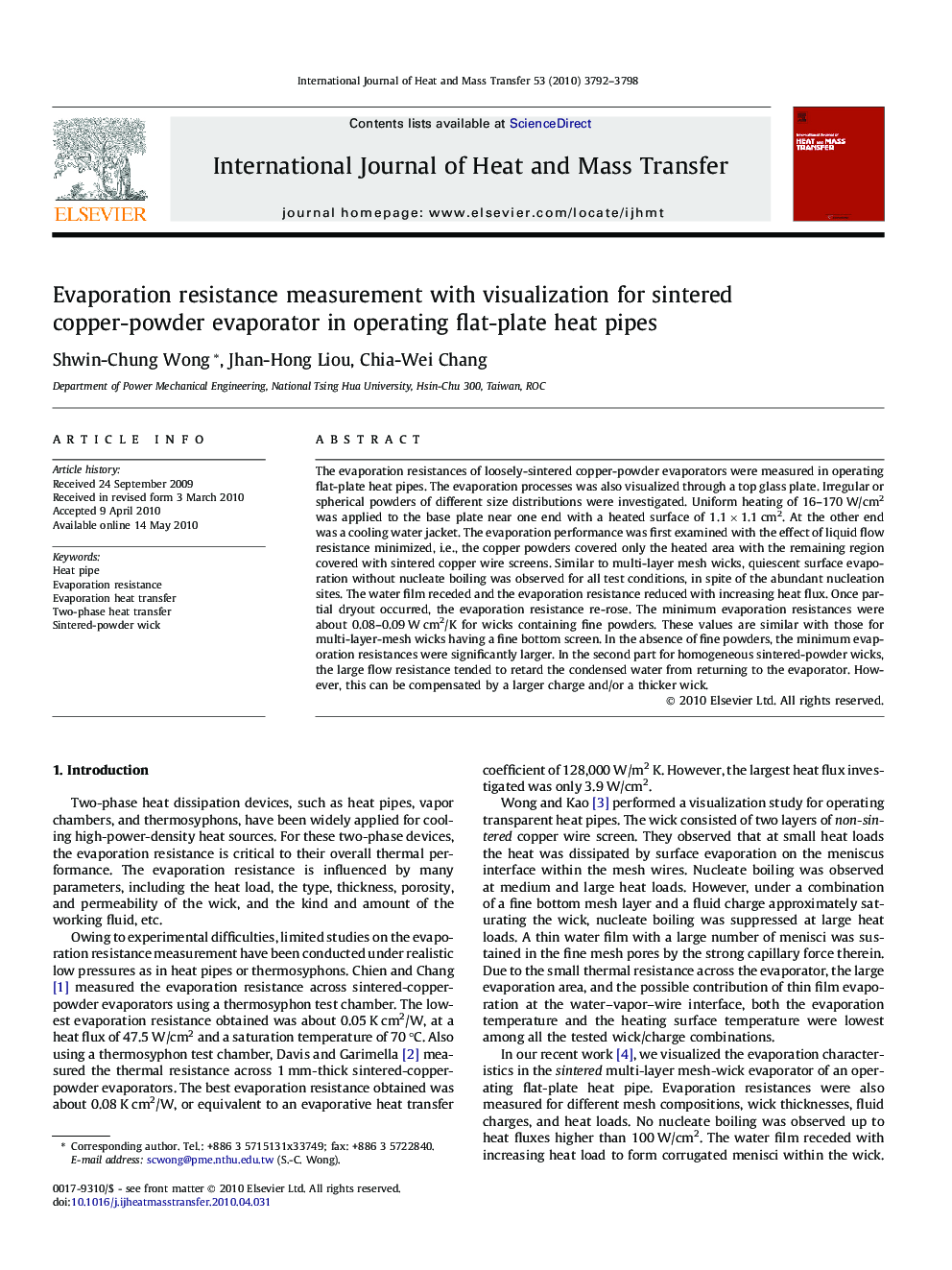| Article ID | Journal | Published Year | Pages | File Type |
|---|---|---|---|---|
| 659850 | International Journal of Heat and Mass Transfer | 2010 | 7 Pages |
The evaporation resistances of loosely-sintered copper-powder evaporators were measured in operating flat-plate heat pipes. The evaporation processes was also visualized through a top glass plate. Irregular or spherical powders of different size distributions were investigated. Uniform heating of 16–170 W/cm2 was applied to the base plate near one end with a heated surface of 1.1 × 1.1 cm2. At the other end was a cooling water jacket. The evaporation performance was first examined with the effect of liquid flow resistance minimized, i.e., the copper powders covered only the heated area with the remaining region covered with sintered copper wire screens. Similar to multi-layer mesh wicks, quiescent surface evaporation without nucleate boiling was observed for all test conditions, in spite of the abundant nucleation sites. The water film receded and the evaporation resistance reduced with increasing heat flux. Once partial dryout occurred, the evaporation resistance re-rose. The minimum evaporation resistances were about 0.08–0.09 W cm2/K for wicks containing fine powders. These values are similar with those for multi-layer-mesh wicks having a fine bottom screen. In the absence of fine powders, the minimum evaporation resistances were significantly larger. In the second part for homogeneous sintered-powder wicks, the large flow resistance tended to retard the condensed water from returning to the evaporator. However, this can be compensated by a larger charge and/or a thicker wick.
